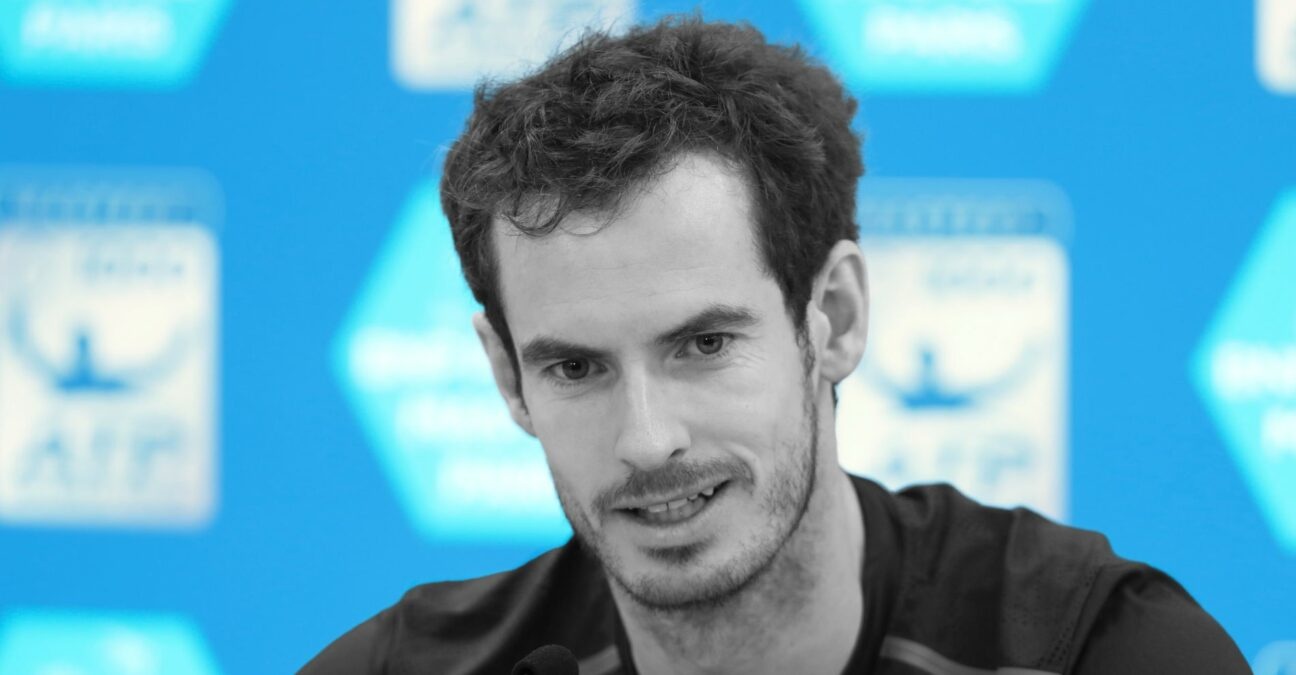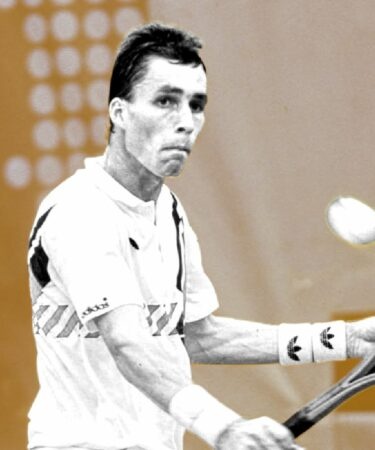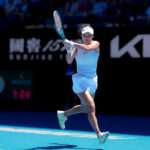November 5, 2016: The day Andy Murray became world No 1 for the first time
Every day Tennis Majors looks back to the biggest moments in tennis history. On this day in 2016, the withdrawal of Milos Raonic at the Paris Masters meant that Andy Murray became the world No 1 for the first time
 Murray_Paris Masters_2006_OTD Pic
Image Credit –
© Panoramic / Tennis Majors
Murray_Paris Masters_2006_OTD Pic
Image Credit –
© Panoramic / Tennis Majors
What exactly happened on that day? Murray ATP #1
On this day, November 5 in 2016, Milos Raonic, the fourth seed at the Rolex Paris Masters, pulled out from the tournament due to a leg injury, before he was due to face Andy Murray in the semi-finals. It was all the Scot needed to become world No 1 after Novak Djokovic has been beaten in the quarter-finals. However, after his outstanding second half of the season, which had seen him triumph at both Wimbledon and the Olympic Games, Murray was bursting with confidence and would begin his reign in style, defeating John Isner in the final the next day (6-3, 6-7, 6-4).
The players involved: Andy Murray and Milos Raonic
- Andy Murray: the British hero who made the dreams of a nation come true
Andy Murray, from Scotland, was born in 1987. He achieved some initial success on the tour in 2005, reaching his first final in Bangkok as world No 109 (lost to Roger Federer, 6-3, 7-5). In 2006, he claimed his first title on the ATP tour in San Jose, edging out Lleyton Hewitt in the final (1-6, 6-2, 7-6).
However, Murray’s big breakthrough season came in 2008. That year, not only did “Muzz” claim five titles, including two Masters 1000 titles in Cincinnati and Madrid; he also reached the quarter-finals at Wimbledon (defeated by Rafael Nadal, 6-3, 6-2, 6-4), and also finished runner-up to Roger Federer at the US Open (6-2, 7-5, 6-2).
He finished the season as world No 4, a spot he was going to occupy for the next four years, becoming a part of the “Big 4” )along with Federer, Rafael Nadal and Novak Djokovic) dominating the game at the time. During this period, at the Grand Slams, Murray reached the semi-finals on six occasions and the final round on five occasions without ever winning one.

Murray then hired Ivan Lendl as a coach, because they had a similar story : Lendl had also lost several Grand Slam finals before eventually claiming his first at the 1984 French Open. The magic worked: in 2012, after a painful loss against Roger Federer in the Wimbledon final, Muzz brilliantly took his revenge against the Swiss, destroying him in the Olympic Games final (6-2, 6-1, 6-4) to win the gold medal. Less than two months later, he edged Novak Djokovic in a dramatic US Open final during which victory almost escaped him (7-6, 7-5, 2-6, 3-6, 6-2), becoming the first British male player to claim a major title since Fred Perry won Wimbledon in 1936.
In 2013, he made the dream of an entire nation come true when he defeated Djokovic to win the Wimbledon title (6-4, 7-5, 6-4). However, Murray had to undergo lower back surgery at the end of the year, and in 2014, he struggled to remain in the top 10. He was back at his best level in 2015, reaching a fourth final at the Australian Open, but in 2016, he took his career to a next level: finishing runner-up to Djokovic at both the Australian Open and Roland-Garros, and winning Wimbledon for a second time, defeating Milos Raonic in the final (6-4, 7-6, 7-6). A few weeks later, he became the first male player to ever win the Olympic Gold twice, beating Juan Martin del Potro in the final in Rio de Janeiro (7-5, 4-6, 6-2, 7-5).
Despite a disappointing loss to Kei Nishikori in the US Open quarter-finals, he was definitely the man to beat in the second half of the year and had the opportunity to seize the world No 1 spot for the first time.

- Milos Raonic: The big-serving Canadian who had climbed to No 4 in the rankings
Milos Raonic was born in Yugoslavia in 1990, but his parents settled in Canada before he turned five. With a game relying mainly on one of the biggest serves ever seen on the tour, Raonic had his breakthrough year in 2011: after having reached the Australian Open fourth round, he claimed his first title in San Jose (defeating Fernando Verdasco in the final, 7-6, 7-6) and leapt from world No 156 to world No 31 in less than 12 months. He also won this tournament in 2012 and 2013, but it was in 2014 that he achieved his first big results at the Grand Slams, reaching the quarter-finals at Roland-Garros (defeated by Novak Djokovic, 7-5, 7-6, 6-4) and the semi-finals at Wimbledon (lost to Roger Federer, 6-4, 6-4, 6-4).
After a 2015 season hampered by injuries, he reached his peak form in 2016: defeated in five sets in the semi-finals of the Australian Open by Andy Murray (4-6, 7-5, 6-7, 6-4, 6-2), and finishing runner-up to the same Murray at Wimbledon (6-4, 7-6, 7-6). Thanks to these great results, he climbed as high as world No 4 in October.
The place: Bercy, Paris
The Paris-Bercy Indoor Open was established in 1986. Held each year in early November, it was usually the last tournament on the tour before the Masters Cup and the Davis Cup finals. One of the most prestigious indoor events in the world, it became a part of the Super 9 category (the former name of the Masters 1000) in 1990. Amongst former champions were great stars like Boris Becker (1986, 1989, 1992), Andre Agassi (1994, 1999), Pete Sampras (1995, 1997) Marat Safin (2000, 2002, 2004), Roger Federer (2011), but the most successful player at Bercy was Novak Djokovic with his four titles (2009, 2013-2015).
The facts: Andy Murray learns about the withdrawal in the locker room
At the 2016 Paris Rolex Masters, for the first time in his career, Andy Murray had the opportunity to become world No 1. The Scot, who had been the least successful member of the Big 4 for years, accumulating “only” three Grand Slam titles despite having reached the final four no less than 20 times, finally had his revenge. Runner-up to nemesis Novak Djokovic at the Australian Open and Roland-Garros, Murray has had a enjoyed stranglehold on the tour since then. He not only captured a second Wimbledon crown, but he also became the first man to win two Olympic gold medals at singles, accumulating a total of seven titles throughout the year.
Meanwhile, although Djokovic had reached the US Open final, he struggled to find true motivation since he had finally won the French Open and achieved the career Grand Slam. Therefore, after his disappointing quarter-final loss to Nishikori at Flushing Meadows, Murray was entering as many events as he could to try and reach world No 1 for the first time. In his quest for the top spot, the Scot won three consecutive tournaments in October itself, in Beijing, Shanghai and Vienna. When the Paris Rolex Masters began, Murray knew that he could become No 1 if he won the tournament and if Djokovic was eliminated before the final. The Serb was defeated by Marin Cilic in the quarter-finals (6-4, 7-6), which meant that reaching the final was now enough for Murray to become world No 1 on November 7.
It’s been such a difficult thing to do because of how good the guys ahead of me have been
Andy Murray
His ascent to the top spot was made easier by Milos Raonic, his scheduled semi-final opponent in Paris who had to pull out due to a leg injury. Murray learnt he had become world No 1 strangely in the locker room, as he told The Guardian.
“I was in the locker room watching some videos of Milos’s match yesterday when he came into the room where we were. I kind of, like, quickly closed the iPad. Then he told us he had hurt his quad and he wasn’t going to be able to play.”
This awkward way of getting to the top didn’t diminish Murray’s satisfaction.
“It’s been such a difficult thing to do because of how good the guys ahead of me have been,” he said, according to The Guardian. “Even this year, to even be there for one week and be 20 points ahead, or whatever, I have had to win so many matches and get to the latter stage of pretty much every tournament I have played. They (Djokovic, Federer and Nadal) are three of the best players that have ever played the game. Some of the years that they have had in that period have been ridiculous, really – three slams, double slams and many Masters series, as well. So it’s taken a great year to get there.”
What next? Murray beats Isner to lift the Paris Masters
On the following day, Murray would begin his reign in style, defeating John Isner to win the Paris Rolex Masters for the first time (6-3, 6-7, 6-4). A few weeks later, the Scot would put the cherry on top of his fantastic year by defeating his long-time rival Novak Djokovic in the final of the Masters Cup (6-3, 6-4). Unfortunately, his body would never really recover from this crazy 2016 season, and in the following years, he would undergo surgery several times, trying to get back to the top while adding two more tour-level titles to his list of achievements, the most recent in Antwerp in 2019.













